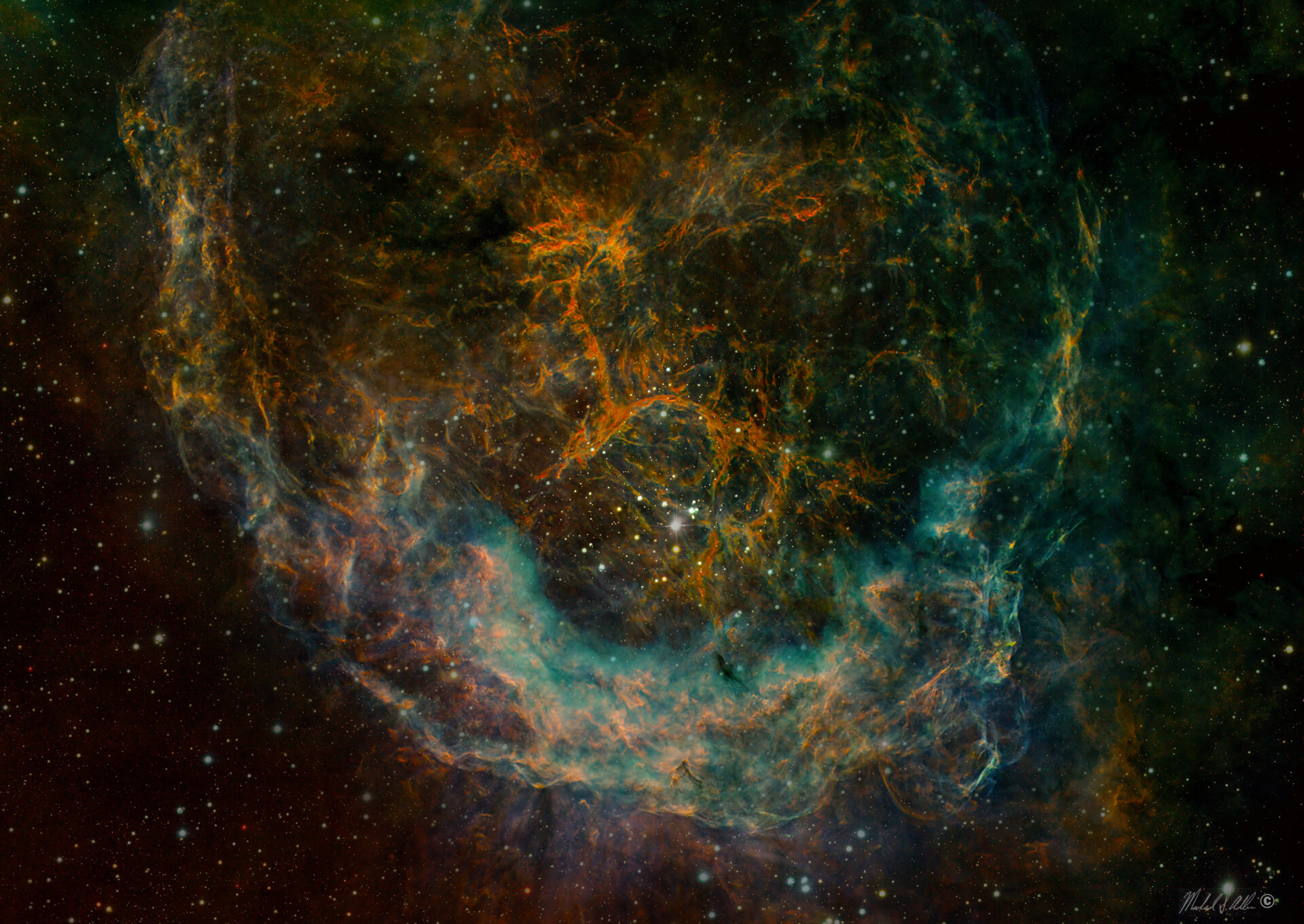Optics: Planewave 24″ CDK24
Mount: Software Bisque Paramount ME
Camera: Movarian C3-61000
Filters: Astrodon RGB
Dates/Times: June 2023
Location: Rio Hurtado, El Sauce, Chile Martin Pugh Observatory
Exposure Details: CDK24, Ha,Oiii=14x15min, Sii-25x15min, R,G,B=11x3min, total 87 images, 16 hrs, 30min
Acquisition: MaxIm DL
Processing: MaxIm DL for calibration, stacking, and creation of the narrowband and RGB color images BlurX Terminator,Topaz Sharpen AI, StarX Terminator, Photoshop CC2023 for image processing and combining the narrowband and color images
NGC 3199, Windblown
Original price was: $65.00.$52.50Current price is: $52.50.
NGC 3199, Windblown NGC 3199 lies about 12,000 light-years away, a glowing cosmic cloud in the nautical southern constellation of Carina. The nebula is about 75 light-years across in this narrowband false color view. The red color is emission from Sulfur, green from Hydrogen, and blue from Oxygen. Though the deep image reveals a more or less complete bubble shape, it does look very lopsided with a much brighter edge along the bottom. Slightly to right of the center with the star spikes is the Wolf-Rayet star WR-18, a massive, hot, short-lived star that generates an intense stellar wind. In fact, Wolf-Rayet stars are known to create nebulae with interesting shapes as their powerful winds sweep up surrounding interesting interstellar material. In this case, the bright edge was thought to indicate a bow shock produced as the star plowed through a uniform medium, like a boat through water. But measurements have shown the star is not really moving directly toward the bright edge. So a more likely explanation is that the material surrounding the star is not uniform, but clumped and denser near the bright edge of windblown NGC 3199. This could be due to an existing area of nebular gas which shows a high content of Oxygen with its blue color. This image was taken with a 24″ Planewave telescope in Rio Hurtado Chile.


